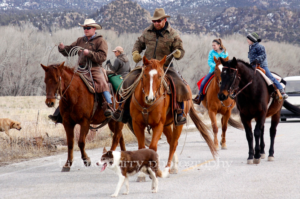New tech can help mitigate conflicts between livestock and recreational land users

New tech can help mitigate conflicts between livestock and recreational land users. Photo by Taf McMurray
Agriculture has been practiced for millennia, but that doesn’t mean farmers and ranchers have stopped innovating since the invention of barbed wire. This is clear in Chaffee County, where Central Colorado Conservancy is partnering with the U.S. Forest Service and local ranchers to launch a pilot virtual fencing project.
Virtual fencing is a new technology for the grazing world. It uses a network of radio towers and programmable animal collars to set virtual fence boundaries. The Conservancy received a Chaffee Common Ground grant in 2022 to purchase the first set of towers for the region.
The organization reports that local ranchers are excited to try the technology, which enables them to manage livestock to benefit soil health, protect riparian areas, target noxious weeds, mitigate wildfire risk and improve forest health.
Ranchers also hope virtual fencing will mitigate conflicts between livestock and recreational land users. Such conflicts are on the rise as recreation booms in Chaffee County, bringing visitors who are not always familiar with or respectful of fence and gate etiquette.
While virtual fencing can’t replicate the value of a rancher riding out to check on a herd, it can help ranchers meet new and old challenges, and ensure that they will be riding fence lines and tending to the land long into the future, rather than becoming an iconic vision from the past.
